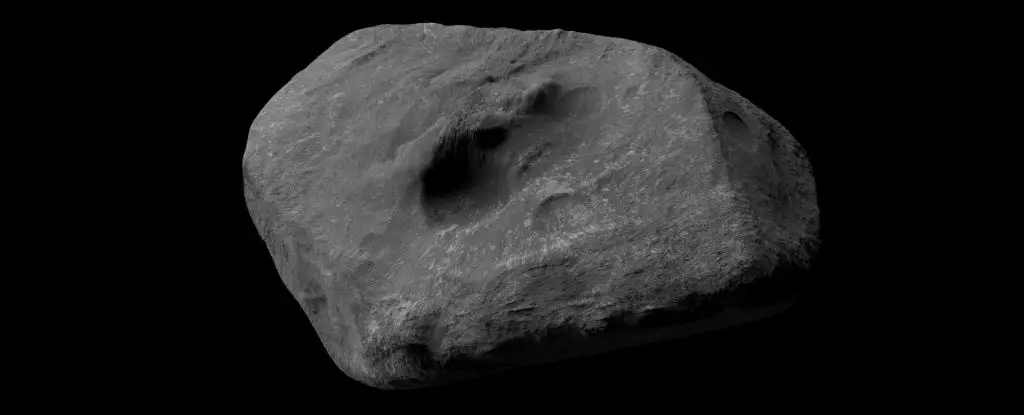On December 27, 2024, the cosmos delivered a remarkable surprise in the form of asteroid 2024 YR4. This celestial body seemed to pop into existence from nowhere, captivating astronomers and space enthusiasts alike. However, as it often happens in astronomy, what seems sudden is often the result of intricate celestial mechanics. Scientists soon discovered that 2024 YR4 originated from the central region of the main asteroid belt, a striking revelation considering the typical trajectories of Earth-crossing asteroids. Scientifically dubbed as a ‘city killer,’ the implications of its potential impact prompted urgent discussions regarding planetary defense measures and space monitoring techniques.
The Science Behind the Spectacle
Beneath the extraordinary façade of a newly discovered asteroid lies a treasure trove of scientific insights. Astronomers, led by Bryce Bolin from Eureka Scientific, quickly began to study this interstellar wanderer. Key to their analysis was the examination of its dimensions and structural characteristics. Bolin and his team utilized advanced telescopic systems, including the celebrated W.M. Keck Observatory and the Gemini South telescope, to dissect the asteroid’s physical properties.
Asteroid 2024 YR4 spins once every 20 minutes and exhibits a retrograde rotation—meaning it turns in the opposite direction to most celestial bodies. This peculiar behavior hints at an origin story that may be more complex than initially assumed. In contrast, its flattened, irregular silhouette bears a resemblance to a hockey puck rather than the potato-like shapes typical of many asteroids. This distinct morphology lends insight into its formation processes, helping scientists decipher not only its pathway but also that of other asteroids with similar characteristics.
The Substance That Defines 2024 YR4
The study of 2024 YR4 has unveiled not just its appearance but its composition as well. Believed to demand attention because of its potential to bring about widespread destruction, understanding what an asteroid is made of becomes crucial in considering future planetary defense strategies. Researchers identified 2024 YR4 as an S-type asteroid, composed predominantly of siliceous rock. This classification positions it in stark contrast to the more common carbonaceous asteroids, which often consist of a variety of minerals in a less cohesive form.
This revelation is significant for more than just academic interest. A deeper understanding of its composition helps delineate how we might respond in the unlikely event of a collision with Earth or the Moon, both of which currently seem to lie safely out of the asteroid’s trajectory. Given that 2024 YR4 measures between 30 and 65 meters (98 to 213 feet) across, even a small miscalculation in predictions could yield catastrophic results.
The Asteroid’s Future: A Cause for Concern or Celebration?
Initially, the arrival of 2024 YR4 sent shockwaves through the global astronomical community, raising alarms about its potential for future impacts. However, subsequent studies have drastically minimized the risk associated with its next close approach in 2032, with scientists asserting that the probability of collision has been downgraded to an almost negligible level. Interestingly, while the threat to Earth has diminished, some models indicate a slight possibility of a lunar encounter—a compelling detail that continues to fuel curiosity.
The implications of studying 2024 YR4 extend well beyond this individual asteroid. The data amassed from its characteristics allows researchers to refine their impact paradigms and observational strategies for future celestial bodies that appear unexpectedly. As we inch closer to a time when asteroid collision could pose a serious risk, understanding their origins, paths, and compositions transforms from an academic exercise into a pragmatic necessity.
Implications for Planetary Defense
The ongoing analysis of asteroids like 2024 YR4 serves as a critical line of defense in our quest to understand and potentially mitigate risks posed by the cosmos. The study of its rotation, shape, and density has implications for developing technologies capable of redirecting such celestial threats. Planetary defense initiatives benefit immensely from detailed intelligence concerning the gravitational dynamics at play, particularly with respect to interactions involving massive planets like Jupiter.
While the concept of asteroids might conjure images of doom, it is essential to recognize that these objects can also serve as harbingers of hope. As modern technology continues to evolve, the capabilities of our telescopes and computational models will become more refined, offering deeper insights into the very fabric of our solar system. The story of asteroid 2024 YR4 is more than just a fleeting incident; it encapsulates humanity’s ongoing journey into the cosmos—transforming fear of the unknown into understanding, curiosity, and preparedness.


Leave a Reply